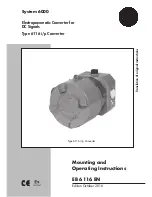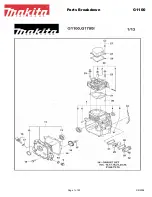
LC2000/LC2000-IQ/LC4000/LC4000-IQ
Channel Operation Menus
Issue 1 Rev 6
Page 85
© 2015 SAM
8.8.9 Output Timecode Entry
In the Output Timecode Entry field you can enter a value to specify when the output timecode
starts. Once set, the output timecode will start when the input timecode reaches the trigger
value set in the Input Trigger Entry field.
8.8.10 Timecode Entry
In the Timecode Entry field you can enter a value to specify when the internally generated
timecode starts. Once set, the internally generated timecode will start when you select the
Timecode Load button.
8.8.11 Timecode Load
Timecode Load enables you to manually trigger the internally generated timecode, as defined
in the Timecode Entry field.
8.8.12 On Timecode Loss
On Timecode Loss defines how the embedded output timecode should behave if input
timecode cannot be detected.
•
Freeze:
On timecode loss, the output timecode will freeze at the last valid detected
input value, until the valid input returns.
•
Free Run:
On timecode loss, the output timecode will switch to free-run and generate
its own timecode starting from the last valid detected input value, until the valid input
returns.
8.8.13 Non Drop Frame
Output timecode always follows the correct count sequence for the output standard, except
when following an input timecode that does not represent actual time (except if the input is
flagged as 59 non-drop).
Drop Frame operates as follows:
•
When converting timecode from 29/59 Hz to 29/59 Hz standards, the output
drop-frame type automatically matches the input (the Drop Frame control has no
effect).
•
When using the internal timecode generator with a 29/59 Hz output standard, the
drop-frame type is determined by the Drop Frame control.
•
When converting 23 Hz inputs to anything, follow input will give a broken sequence.















































